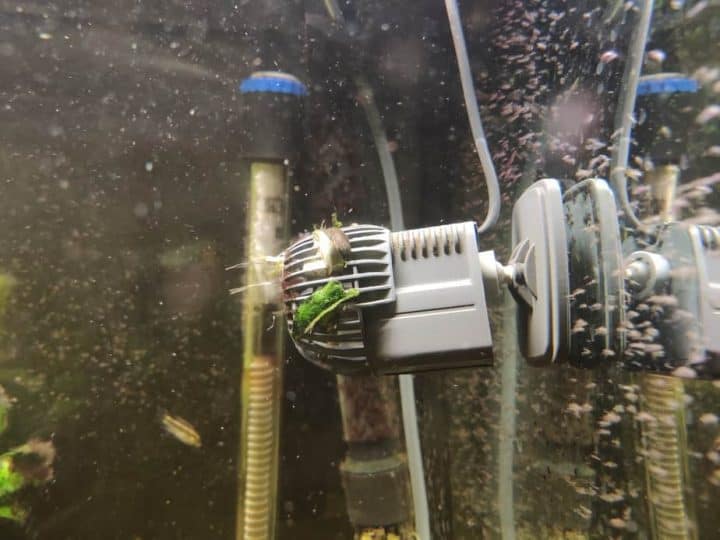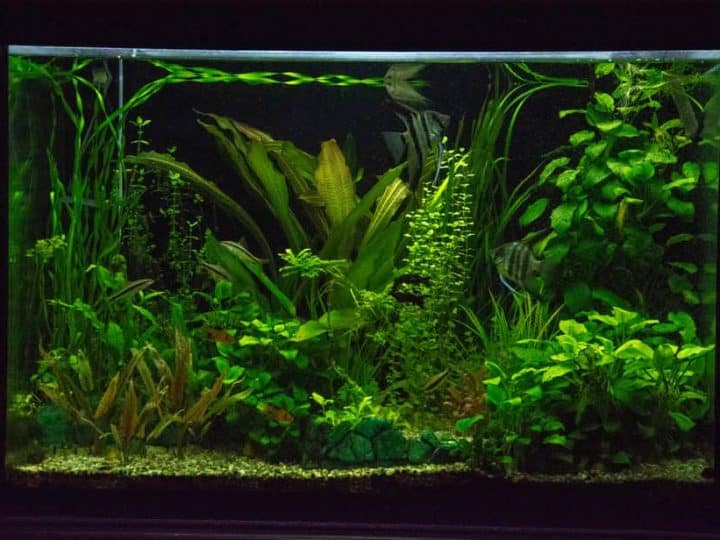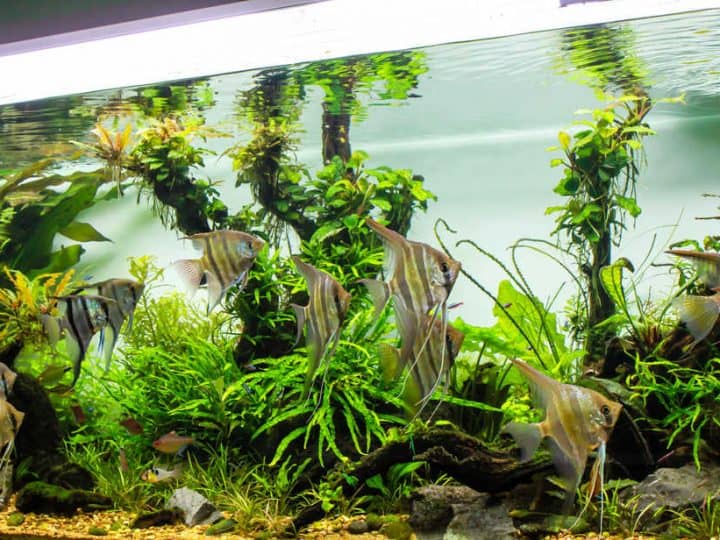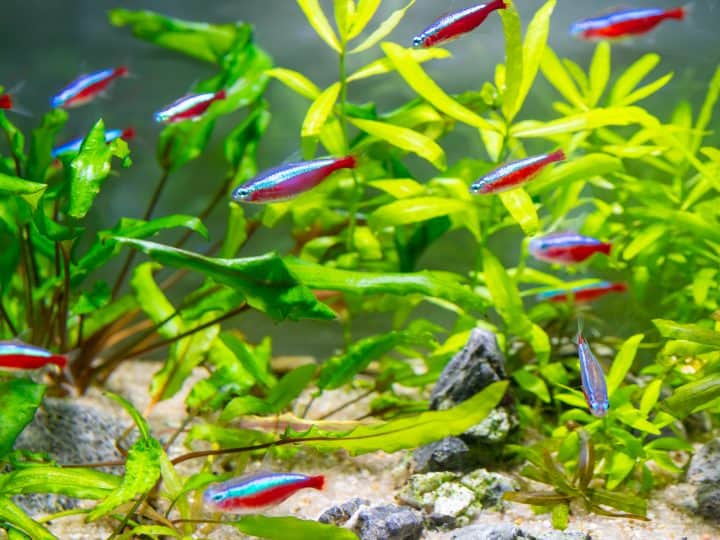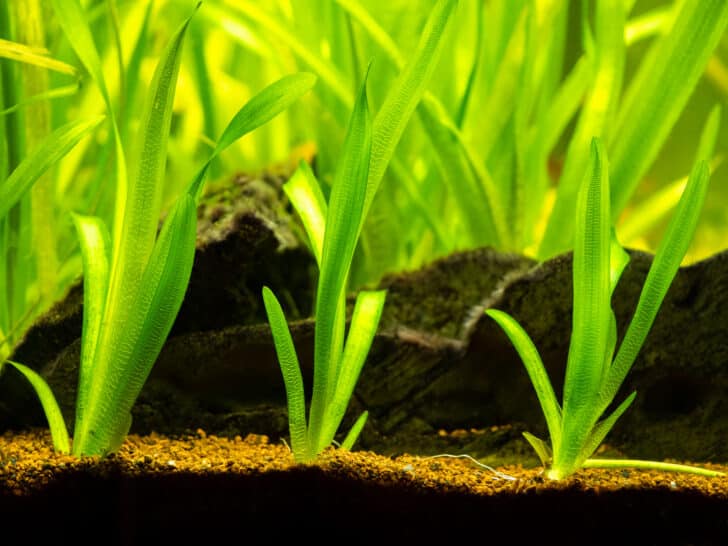When I upgraded to a tropical aquarium with live plants, the aquarium came with an aquarium light. I did not know the needs of the plants, and therefore I did some quick research. This is what I found.
Quick Answer
Aquarium plants need between 8 to 10 hours of light per day. The duration can vary depending on the brightness of your light, the needs of the specific plant and the ambient light in the room. Too much light can cause excessive algae growth.
So there is your answer, but I think it is important for you to know why most people run about 8 to 10 hours of light, how you can find your optimal duration and how you can regulate and maintain the proper light duration for your aquarium. I tried to explain all this as best as I could below!
Experiment when the aquarium is still new
When your aquarium is still new, and you have just recently set it up, you might have to experiment with different durations of light. Start with 8 hours of light and see what happens to your aquarium over the course of a couple of weeks. I think trying each duration for about a month will show you proper results.
When you start with 8 hours of light each day, chances are that you are already on the right track. After about a month (and the time building up to it) you should look for algae growth. This can be green hair algae, brown algae or other kinds of algae.
When your tank starts growing a lot of green algae, you are probably leaving your lights on for too long. Too much light in combination with a lot of nutrients in your aquarium water causes algae to grow rather rapidly and can also affect the color of the water, making it brown or yellow-ish.
To cure this, you can either dial down the amount of hours you have your light turned on or add some fast growing plants that will take out a lot of nutrients from your water. I would go with a combination of the two. If you are looking for easy live plants to add to your aquarium, you can check out my list of 6 easy live plants that do not require CO2. I am sure you will find some inspiration there.
When your aquarium starts growing brown algae, it means that there are a lot of nutrients in your aquarium water but not enough light to be consumed by your plants or green algae. This is a good indicator of a lack of sufficient light. If you notice brown algae in your tank, try to increase your light. This can be increasing the duration of the light or adding brighter lights to your aquarium.
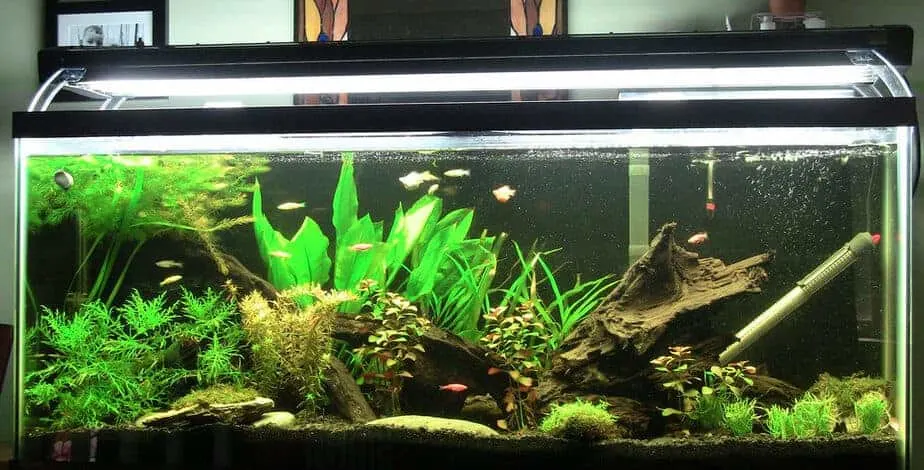
What happens with too much or little light?
When your aquarium does not have the right amount of light, it means that there is no balance in your tank. And a balanced aquarium is a healthy aquarium, so we are always looking for a balance.
In your aquarium, an imbalance will often show itself by algae growth. This is what we also already discussed in the section above. When you have a healthy balanced aquarium the plants will consume all the nutrients in the water and grow steadily. To do this, your plants need light, nutrients and CO2.
If the plant has enough nutrients, enough CO2 and enough light it will grow. But when there is not enough light it wont. In this case your aquarium will start to grow brown algae.
If there is too much light (definitely a possibility) all your aquarium plants will grow as fast as they can. But when there is so much light and an abundance of nutrients, a lot of the times green algae will consume the rest of the nutrients.
Different plants have different needs
From our own garden we know that different plants have different needs. Some plants like to be in the shade, some in half shade and some want as much direct sunlight as they can get.
Well, in our aquarium this isn’t different. There are plants that require high intensity light for a long period of time, and there are plants that prefer shady or darker places. A good example of popular plants that does not need a lot of light is the Java Fern. They do best in darker spots in your tank, and they will even ‘melt’ when growing in too much light.
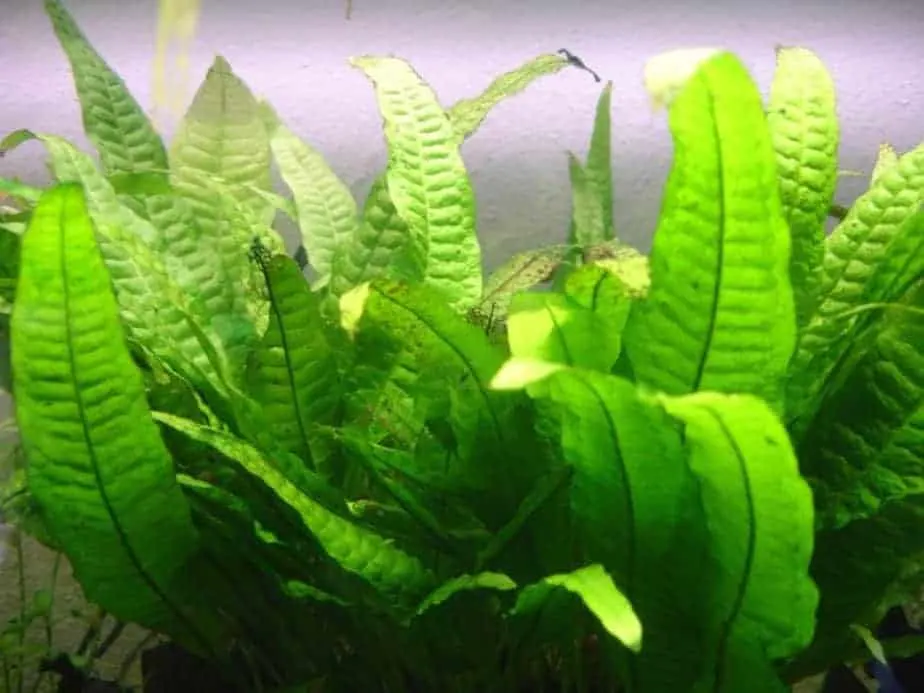
So, whenever you ask yourself the question “how much light does my aquarium need?” you need to take into account what plants you have (or plan to grow) in your aquarium. Look into the plants that you bought and check their requirements; even better, research potential plants before you buy them to prevent disappointment or extremely different needs.
Of course, you can put different plants with different needs in the same aquarium when you think carefully about where you position them. You can place plants with a higher light ‘desire’ more to the top of the tank, closer to the light. Place plants that prefer shade in darker spots in the aquarium, behind driftwood or in shade of other plants.
Difference between LED and Fluorescent light
Since a couple of year, LED lamps have become increasingly popular as light sources for aquariums. They have been fighting for the spot that halogen (fluorescent) lighting has had for many years: the most used type of light source.
To be honest, I think it will not take a lot of time before all aquarium owners switch to LED. But what is the difference as of today? There already is a lot of information available, for example at www.fishkeepingforever.com in their article about light duration.
Well, LED lights are more expensive compared to fluorescent lights. This is a major reason why people do not buy LED lights. When you have LED lights, you are set for many years. Different sources say anywhere between 4 to 6 years before LED lights need replacing. This is not the case for fluorescent lights.
Fluorescent lights need to be replaced about once a year because they will decrease in strength gradually. While being initially cheaper, with all the replacements it might become more expensive.
Furthermore, LED can be aimed at the desired position, whereas fluorescent light also illuminates upwards. While the surface of the aquarium top is bright and reflects all the light, LED is way more efficient.
And finally, LED is way more efficient and therefore uses way less energy. This is extremely beneficial for your energy bill, especially with larger tanks.
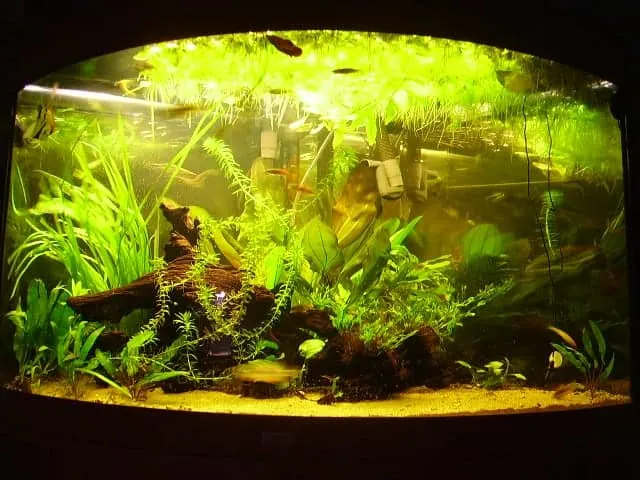
How to regulate aquarium light
Regulating aquarium lighting is crucial for multiple reasons. The main reason that ‘covers them all’ is that we are striving for consistency. We want the light to switch on and off on the same time, and we want the brightness to be the same every day.
This is also because the fish will benefit from this as they ‘know’ when the light turns on. This is the same for feeding on the same times, but that is a small side note.
To obtain this, make sure you are using a timer. Using a timer that you can program to switch on and off the lights for you seems obvious to so many people, and chances are that you are already using one already. However, I have talked with a lot of people who turned on and off their lights every day by hand. Possible, but do it consistent or use a timer.
Furthermore, lights need to be replaced. Especially when you are using fluorescent lights and they decrease in strength over time. I replace my fluorescent lights once a year, and I really notice a difference every time I put in a new one.
With LED lights you do not have to replace them that often.
There are a lot of lights which have a dimmer, so you can actually change the brightness of you lights. When you notice you have too much light but do not want to decrease the duration, you can also turn down the intensity.
My favorite fishtank products that make life easier
I am so happy you enjoy this post so far! You will also definitely like my product recommendations that will make your fishkeeping experience so much better. I’m 100% sure you’ll love them!
- Without a gravel vacuum, like one from Aqueon, cleaning the substrate of your tanks is near impossible. Whenever I want to remove some of the sunken detritus from the bottom of my acrylic tanks I’m happy I’ve got one of these.
- It’s no secret that I do not like nutritious aqua-soil. It makes a mess and only works for a given amount of time. Instead, I always use a liquid aquarium plant fertilizer. Everyone who keeps live plants needs it, it’s not that expensive and makes your plants grow better.
- I love keeping plants, but planting and reorganizing my aquarium was difficult until I got a set of these tools. It’s much easier to plant any kind of plant compared to using my thick fingers.
- Ever since I’m able to accurately test my water parameters, including the pH level, keeping fish became less stressful. Before I was always stressed that my water parameters were wrong, but with a kit such as the API Master kit, I can measure this. It really is essential to successful fishkeeping.
- The more you know about your aquarium, the better! Temperature is crucial for the health of your fish. A thermometer will also show you whether your heaters are still working correctly. It will give you more insight and more peace of mind. It’s an easy way to ensure that you’re providing your fish with the tropical temperatures they need.
Related Questions
What is the best light temperature for aquarium plants? The best light temperature to grow plants in your aquarium has to be as close to sunlight as possible. Daylight or sunlight has a color temperature of 6500°K, so try and buy a light that replicates that. Anywhere within a range of 5500°K to 6500°K is perfect!
Is there a way to leave aquarium lights on longer? Yes, there are a couple of things you can do to leave the aquarium light on longer per day. The first one is decreasing brightness. If you have a dimmer, try having a less intense light shine longer. The other way is to add more live plants to your aquarium, especially fast growing plants. They will compete with the algae for nutrients and it will allow you to leave your lights on for a bit longer.
References:
Feature image – Author: Pete Brown Licensed by CC2.0 Cropped
Java Fern image – Author: Pinpin Licensed by CC3.0 No Changes
Planted tank image – AUthor: Emilia Murray Licensed by CC2.0 No changes

